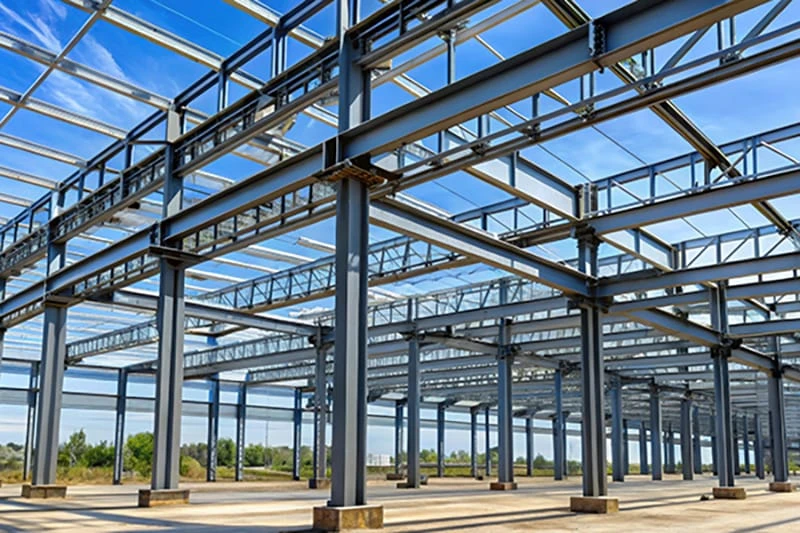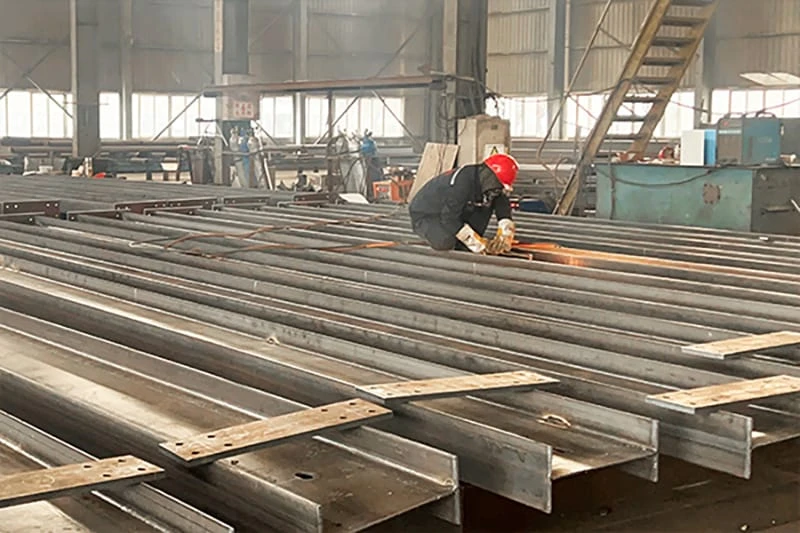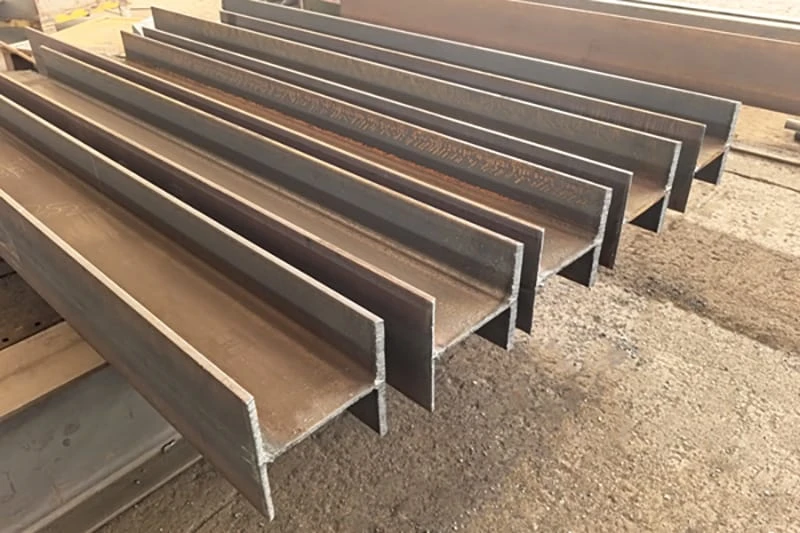The welded H-beam and hot-rolled H-beam differentiate mainly in the factors of manufacturing process, cross-sectional characteristics, load-bearing capacities, and application scenarios.

Manufacturing Process
1. Welded H-Beams: These beams are usually produced by cutting steel plates on a CNC flame cutting machine, putting them together with certain advanced tools, and then welding using a gantry welding system. This technique gives an easily flexible cross-section dimension and shape according to any design requirement which can help also reduce cost.

2. Hot-Rolled H-Beams: These form by very high billet steel temperatures followed by rolling them into H shapes with the aid of a mill. Excellent mechanical properties and dimensional precision come to the steel by this hot-rolling process.

Cross-Sectional Characteristics
1. Welded H-Beams: Since these are made by plates of steel, the cross-section can be adjusted to any particular need. That gives more design flexibility.
2. Hot-Rolled H-Beams: The cross-sections are standard and set; they have consistent geometric dimensions and stable performance. But, the specifications give place for only little adaptability.
Load-Bearing Capacity
1. Welded H-Beams: Load capacity depends on steel type, plates thickness, and welding quality. If designed well and welding processes checked, these beams come to pose considerable load-bearing capacities.
2. Hot-Rolled H-Beams: Because of rolling, they generally have high load bearing capacities most particularly when it comes to compressive and bending strength.
Application Scenarios
1. Welded H-Beams: Best suited for massive industrial constructions, tall buildings, bridges, and other works where personalized structural answers are needed.
2. Hot-Rolled H-Beams: Commonly applied in typical building structures like house buildings, commercial site properties, and little industrial workshops; mostly when very high levels of standardization are needed.
Why Welded H-Beams Are More Appropriate for Portal Frame Factory Buildings
In portal frame structures, beams and columns are frequently designed with varying cross-sections. This lessens the overall structural weight and permits each part to be designed according to its specific load situations. The variance in cross-section is founded on internal force distribution,enabling materials to be used more efficiently and economically.
Hot-rolled H-beams, by contrast, are usually of consistent cross-section and relatively heavy. This absence of flexibility in application often leads to material waste and amplified overall construction costs.
Hence, welded H-beams are more economical and sensible for portal frame factory buildings, offering better adaptability and cost effectiveness.
Conclusion
Both welded and hot-rolled H-beams have their respective pros and cons. The selection between them depends on particular design demands, structural loads, and cost factors.
For projects that require flexibility, optimization of material utilization, and structural efficiency, especially in portal frame buildings, welded H-beams are often the favored option.